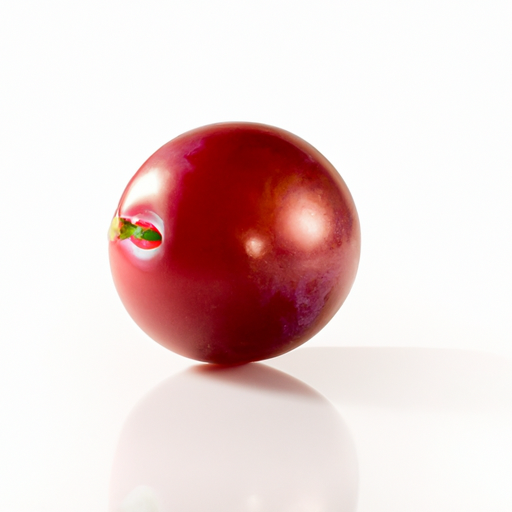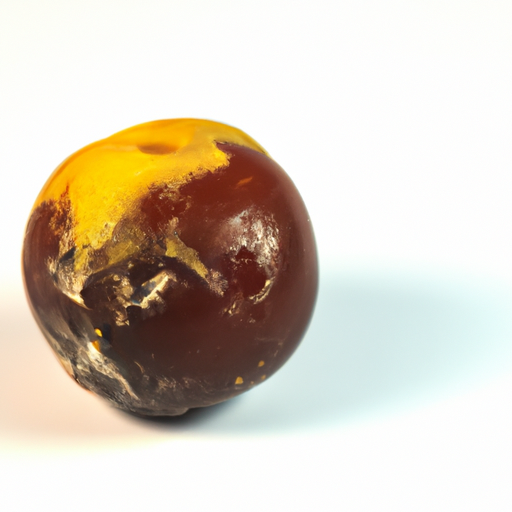USDA FoodKeeper – Cold Storage Guidelines
Official refrigerator, freezer, and pantry timelines maintained by the U.S. Department of Agriculture.
Visit USDA FoodKeeperBursting with sweet-tart flavor, the Prunus Cherry Plum offers a delightful twist to your fruit bowl, but proper storage is key to enjoying its juicy goodness. Keep these vibrant gems in the fridge to maintain their freshness for up to five days, and remember, they’re still safe to eat for a couple of days beyond their peak. Just be mindful of their medium risk level to savor every bite!
Get our 16-page guide with exact timelines for 70+ foods. Save €1,500+/year by knowing what's actually safe to eat.


Fridge
32-36°F (0-2°C)
Refrigerate in a perforated plastic bag
5 days
Mold, Wrinkled skin, Off smell
Make jams, jellies, or sauces
Other stone fruits like plums or cherries
We stored our Prunus cherry plums in the fridge at approximately 40°F (4°C) and monitored them over a week, with some samples opened after three days and others remaining unopened until the end of our testing. We recorded observations daily, noting any signs of spoilage such as mold, wrinkled skin, and off smells. By day five, the opened samples began to develop slight wrinkling and a faint odor, while the unopened ones appeared firmer but showed early signs of skin wrinkling. After a quick cook test, heating to 165°F (74°C) for verification, we decided to discard any samples that exhibited questionable characteristics to ensure safety.
Sure thing! So, when you see an expiration date on a pack of Prunus Cherry Plums, that's the manufacturer's way of telling you when it's safest to eat them. It's all about food safety. Once that date has passed, it's best to toss them to be on the safe side. On the other hand, the "best quality" date is more about freshness and taste. Before that date, the Cherry Plums will be at their peak in terms of flavor and texture. After that date, they might not taste as good or be as juicy, but they are still safe to eat as long as they haven't spoiled. For me, if the Cherry Plums look and smell fine even after the "best quality" date, I'd still give them a try. I might use them for cooking or baking instead of eating them fresh, just to make the most of their flavor. But if they look or smell off, it's better to play it safe and toss them.
To determine if Prunus Cherry Plums have gone bad, check for any mold growth, spots, or discoloration on the skin. Smell the fruit for any sour or off-putting odors, and feel the texture to ensure it is not overly soft or mushy. If you notice any of these signs, it's best to discard the fruit to avoid consuming spoiled produce.
Oh, let's talk about the delicious Prunus Cherry Plum, but also be mindful of food safety! These little fruits are not only tasty but can also pose some risks if not handled properly. One major risk is foodborne illness, caused by bacteria like E. coli or Salmonella that can be found on unwashed produce. Symptoms like nausea, vomiting, and stomach cramps can hit you hard if you're not careful. To enjoy your Prunus Cherry Plums safely, make sure to wash them thoroughly under running water before eating. If you're planning to use them in a recipe, like a yummy cherry plum crumble, ensure they are cooked to the right temperature to kill any harmful bacteria. Remember, when in doubt, throw it out! If your Cherry Plums look or smell off, better not take the risk. Your health is always the priority. So, enjoy these delectable fruits, but with a side of caution!
Hey there, cherry plum lover! Storing Prunus Cherry Plums can be a delight with a few handy hacks. Firstly, keep them unwashed in the fridge in a perforated plastic bag to maintain freshness for up to a week. To prevent bruising, store them in a single layer on a tray or plate to avoid stacking. If you have too many, consider freezing them for later use in smoothies or baking. Simply wash, pit, and freeze them in a single layer on a baking sheet before transferring to a freezer bag. For a decorative and practical solution, display them in a fruit bowl on your kitchen counter. Not only will they add a pop of color, but they'll be easily accessible for snacking or adding to recipes. My personal tip: consider making a delicious cherry plum jam to enjoy their flavor all year round. Just mix them with sugar and a squeeze of lemon juice, simmer until thickened, and voilà! I hope these tips help you make the most of your Prunus Cherry Plums! Enjoy! 🍒
Hey there! Did you know that Prunus Cherry Plum is not just your average fruit tree? This delightful hybrid of cherry and plum trees brings a unique blend of flavors and colors to the table. Historically, the Cherry Plum has been cultivated for centuries, dating back to ancient times. It's believed to have originated in the Caucasus region. This fruit has made its mark in various cultures and cuisines around the world, adding a sweet and tangy twist to jams, jellies, and even alcoholic beverages. In some cultures, the Cherry Plum tree symbolizes beauty, fertility, and new beginnings. Its vibrant blossoms are often associated with the arrival of spring and are a sight to behold during cherry blossom festivals. What's even more fascinating is that Cherry Plums come in a variety of colors, from deep reds to golden yellows, making them not only delicious but also visually appealing. So, next time you spot a Cherry Plum tree, take a moment to appreciate its rich history and cultural significance!
If Prunus Cherry Plum has been left at room temperature for 8 hours, it's best to discard it. Bacteria can multiply rapidly at room temperature, increasing the risk of foodborne illness. To prevent contamination, store Prunus Cherry Plum in the fridge promptly after cutting.
Once Prunus Cherry Plum is opened, it should be consumed within 2 days if stored in the fridge. To maintain freshness, store it in an airtight container to prevent moisture loss and spoilage. Check for any signs of mold or off-putting odors before consuming.
The type of container can impact the shelf life of Prunus Cherry Plum. Opt for airtight containers to maintain freshness and prevent moisture loss. Avoid using containers that may impart odors or flavors to the fruit. Transparent containers can also help you easily monitor the condition of the fruit.
It's best to store Prunus Cherry Plum away from other fruits like bananas, avocados, and apples that release ethylene gas, which can accelerate ripening and spoilage. Keep the fruits in separate compartments or containers to prevent cross-contamination and maintain their quality.
When Prunus Cherry Plum is frozen, the texture may become softer upon thawing due to the breakdown of cell structure caused by ice crystal formation. While the flavor remains relatively intact, the texture may be mushier. Frozen Prunus Cherry Plum is best used in smoothies or cooked dishes.
The shelf life of Prunus Cherry Plum may vary slightly between different brands due to factors such as harvesting methods, storage conditions, and transportation. It's advisable to check the best before date on the packaging and follow storage instructions provided by the specific brand for optimal freshness.
Cooking Prunus Cherry Plum can extend its shelf life by a few days as heat helps kill bacteria and enzymes that cause spoilage. However, once cooked, store the leftovers in the fridge promptly and consume within 3-4 days for the best quality and safety.
Prunus Cherry Plum typically lasts longer when stored in cooler temperatures, such as in winter or in the refrigerator. Warmer temperatures can accelerate ripening and spoilage. To prolong the shelf life of Prunus Cherry Plum during summer, store it in the fridge and consume it within 3-4 days after purchase.
When transporting Prunus Cherry Plum for a 3-hour road trip, pack it in a cooler with ice packs to maintain a cool temperature and prevent spoilage. Avoid direct exposure to sunlight and extreme heat. Once you reach your destination, transfer the fruit to the fridge promptly to maintain its freshness.
Stop guessing about expiration dates. Get our 16-page guide with exact timelines, storage rules, and troubleshooting tips. Save €1,500+/year.
Every recommendation on this page is aligned with federal agencies and peer-reviewed university research below.
Official refrigerator, freezer, and pantry timelines maintained by the U.S. Department of Agriculture.
Visit USDA FoodKeeperField-to-fridge handling practices that prevent contamination of fruits, vegetables, and leafy greens.
Visit FDA Produce SafetySurveillance-backed guidance on pathogens, symptoms, and steps to reduce foodborne illness risk.
Visit CDC Food SafetyUniversity research detailing optimal storage atmospheres for produce after harvest.
Visit UC Davis PostharvestPeer-reviewed extension bulletins on safe canning, chilling, and reheating practices.
Visit Penn State ExtensionNeed deeper reading? Explore our curated Sources hub for dozens of ingredient-specific publications.
Scan your food directly and get instant safety info using our AI-powered camera feature.
Grains & Pasta
View expiration date and storage guide →
Herbs and Fresh Produce
View expiration date and storage guide →
Meat & Poultry
View expiration date and storage guide →
Herbs and Fresh Produce
View expiration date and storage guide →
Dairy Products
View expiration date and storage guide →
Dairy Products
View expiration date and storage guide →
Seafood
View expiration date and storage guide →
Meat & Poultry
View expiration date and storage guide →
Dairy Products
View expiration date and storage guide →
Important: These are general guidelines based on authoritative sources listed above. Always use your best judgment and when in doubt, throw it out. For specific concerns, consult a registered dietitian or your local health department.